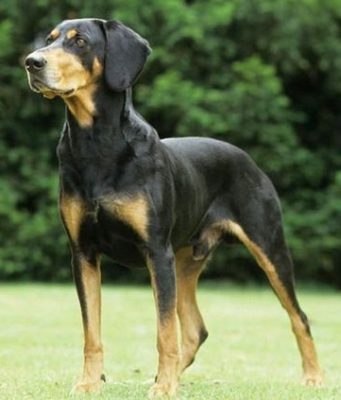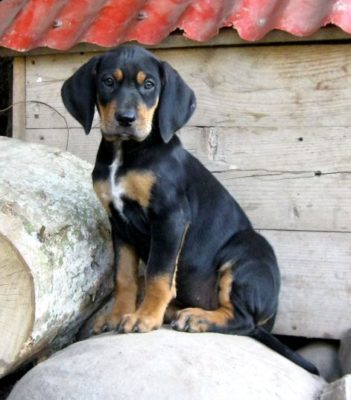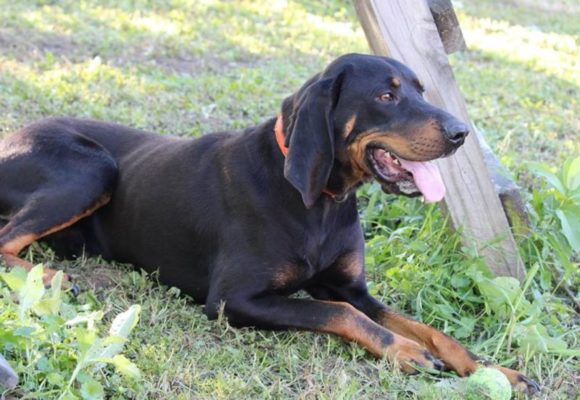Transylvanian Hound
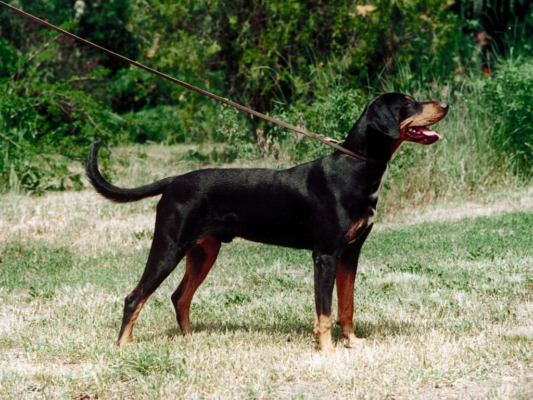
The Transylvanian Hound has a lot of energy and is very active. The dog needs frequent and long walks. The dog does not get along well in apartment conditions. In this case, it is necessary to provide it with many toys so that the energy is compensated while playing. Unfortunately, confined to urban conditions, the hound will look for prey in the street.
Table of Contents
Breed Information
| Another Name | Transylvanian Scent Hound, Hungarian Hound, Erdélyi kopó, Copoi ardelenesc |
| Origin | Hungary |
| Height | Males 60-65 cm Females 50-55 cm |
| Weight | 30-35 kg |
| Fur | Tight, well-fitting, with undercoat |
| Color | Black and brown-padded |
| Lifespan | 12-14 years |
| FCI Classification | Scent hounds and related breeds |
| Group | Hunting dogs |
| Price | $500-1200 |
Breed Photos
Origin History
The Transylvanian Hound is an ancient Hungarian breed. It has several other names, such as the erdélyi kopó, the Hungarian hound, the Hungarian Brakk. The erdélyi kopó had its heyday in the Middle Ages, and the peculiarities of the breed were predetermined by the territory, climate, and hunting conditions.
One distinctive feature of this breed, the graceful hound, is found in two variants at once: taller and lower. The Transylvanian Hound has gone it’s way from incredible popularity to almost complete extinction. Historically, in Hungary, this breed played a significant role among aristocrats; kings and nobles hunted with it.
Because of its diversity in size, the larger breed members hunted larger animals, but the lower hounds worked in dens. The Transylvanian Hound works like a retriever during the hunt; that is, it brings the prey.
Nowadays, hunting has become less popular, so the Transylvanian Hound is mainly bred as a pet. But there are still breeders who use the breed for its true purpose. It is now mainly for hunting big game, as there are almost no lower representatives. Many breeders are still burning with the idea of preserving the breed. A fair number of representatives are in Switzerland and Norway. In these countries, the climate is ideal for keeping the erdélyi kopó, as they do not tolerate the heat.
Appearance
The Transylvanian Hound looks very statuesque. It has a strong body, strong muscles, and strong bones. The muzzle is elongated, and the jaws are tightly clenched. The color of her eyes is a deep brown. The body is slightly higher than the limbs. The chest is broad. The coat is short but stiff, which keeps heat very well. The color is black or brown with tan. The tail is thick and strong.
Character
The Transylvanian Hound has a lot of energy and is very active. The dog needs frequent and long walks. The dog does not get along well in apartment conditions. In this case, it is necessary to provide it with many toys so that the energy is compensated while playing. Unfortunately, confined to urban conditions, the hound will look for prey in the street. Only long-term training will help in this situation. The pet should be introduced to different animals from childhood and dull the excitement and interest at an early stage if her future is not associated with hunting.
Lively interaction with people is very important to the dog. The Transylvanian Hound adores children and always tolerates their antics. However, adults always need to keep an eye on the play process so that no one hurts each other.
The dog should be kept on a short leash while walking. The erdélyi kopó is excellent with their companions, but their temper can take over, and easy play turns to aggression.
Even though the hound tends to be independent, the breed is very attached to its owner. It must not be left unattended for a long time. Otherwise, its resounding barking will disturb all the neighbors. The dog has a strong intellect, literally learns from mistakes, and, with age, increasingly applies the experience gained in different situations.
Care
The Transylvanian Hound does not need any special care. It is enough to adhere to the generally accepted rules of hygiene.
The hair should be combed with a special brush or wiped with a damp cloth. If after a walk the dog came very dirty, it should be given a generous bath. Do not ignore checking for parasites. Claws should be the same length, so you should trim them often. Otherwise, the dog can injure himself.
Training
The Transylvanian Hound can become a very obedient pet with proper training. If you take up the daily practice from infancy, you can achieve amazing results by one year of age. The hound must have one person in authority whom it will obey without question. The main thing is not to forget about the edible encouragement and constantly talk to the dog during the training process.
Common Diseases
Erdélyi kopó has good stamina and strong immunity. However, it is worth paying attention to the scheduled vaccinations and not skipping them. In case the dog becomes passive, you should not delay and contact a specialist.
The Transylvanian Hound can be susceptible to such diseases:
- conjunctivitis;
- joint dysplasia;
- allergies;
- disruption of the digestive system.
Nutrition
Half of the Transylvanian Hound’s diet should consist of protein of animal origin. Unfortunately, the breed is prone to obesity. It is necessary to monitor the dog’s food intake and not overfeed him. You can even make a special diet, diversify it with soups and porridges and various vitamin supplements. Drinking water should always be available to the pet, even during walks.
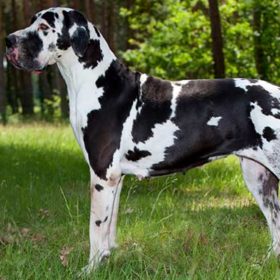 Great Dane
Great Dane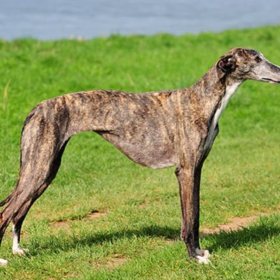 Galgo Español
Galgo Español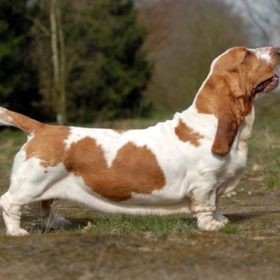 Basset Hound
Basset Hound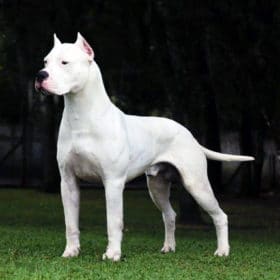 Dogo Argentino
Dogo Argentino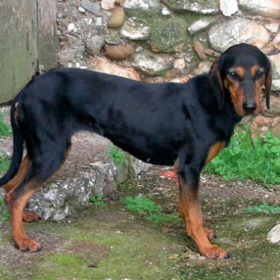 Greek Harehound
Greek Harehound Drever
Drever